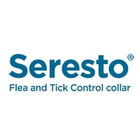Fleas are tiny, fast-moving parasites that can cause significant problems for your dog. A single flea bite can lead to intense itching, skin infections, allergic reactions, and even serious health issues if left untreated. Understanding how to identify flea bites, treat them effectively, and prevent future infestations is key to keeping your furry friend healthy and happy.
In this guide, we’ll walk you through everything you need to know about flea bites on dogs—from symptoms and treatment to prevention tips and recommended products.
What Do Flea Bites Look Like on Dogs?
Flea bites usually appear as small, red bumps that are often clustered together. They are most commonly found on your dog’s:
- Belly
- Groin area
- Tail base
- Inner thighs
- Neck and ears
These bites can cause intense itching. Dogs often scratch, bite, or lick the affected area, which can lead to hair loss, redness, scabs, or even skin infections.
If your dog is itching more than usual, especially around the hindquarters, it’s worth checking for signs of fleas or bites.
Symptoms of Flea Bites in Dogs
Every dog reacts differently to flea bites. Some dogs may show mild discomfort, while others develop more severe symptoms, especially if they have flea allergy dermatitis (FAD).
Common signs include:
- Persistent scratching or chewing
- Red, inflamed skin
- Bumps or scabs
- Hair thinning or bald spots
- Restlessness or irritability
- Tiny black specks (flea dirt) on the skin or bedding
- Visible fleas moving on your dog’s coat
If you notice these signs, it’s essential to act quickly before the problem escalates.
Are Flea Bites Dangerous?
Yes, flea bites can be more than just a nuisance. They can cause:
1. Flea Allergy Dermatitis (FAD)
Some dogs are allergic to the flea saliva. Even one bite can cause intense itching, inflammation, and skin infections.
2. Tapeworm Infections
Fleas may host tapeworm larvae, and if your dog accidentally ingests one during grooming, it can result in a tapeworm infestation.
3. Anemia
In severe infestations, especially in puppies or small dogs, fleas can consume enough blood to cause anemia, leading to fatigue and weakness.
How to Treat Flea Bites on Dogs
1. Clean the Skin
Use a gentle, pet-safe antiseptic or mild soap to clean the affected areas. This helps reduce the risk of infection.
2. Soothe the Itch
Apply a veterinarian-approved anti-itch spray or hydrocortisone cream to relieve irritation. Avoid using human products unless your vet advises otherwise.
3. Eliminate Fleas
It’s crucial to eliminate fleas from your dog and your home. Here’s how:
- Use a fast-acting flea treatment like oral tablets or topical solutions
- Give your dog a flea bath using medicated shampoo
- Comb through your dog’s coat using a flea comb
- Wash your pet’s bedding in hot water
- Vacuum carpets, furniture, and floors thoroughly
4. Consult Your Vet
If you see any signs of a severe skin infection or allergic reaction, consult your vet immediately. Prescription treatments or antibiotics may be needed.
How to Prevent Flea Bites on Dogs
Prevention is the best way to keep fleas away for good. Here’s what you can do:
1. Use Monthly Flea Preventatives
Products like Simparica, NexGard, Bravecto, or Frontline Plus are highly effective. Choose one that suits your dog’s size, age, and health status.
2. Keep Your Home Flea-Free
Treat your home with flea sprays or powders, especially on carpets, baseboards, and areas where pets rest. Regular cleaning prevents eggs from hatching.
3. Check Your Dog Regularly
After walks or playtime in grassy areas, check your dog’s coat for flea dirt or fleas.
4. Treat Other Pets
Fleas can jump from pet to pet. Ensure all your pets are on flea prevention.
5. Maintain a Clean Yard
Fleas thrive in shady, humid areas. Trim bushes, remove debris, and consider using pet-safe outdoor flea treatments.
Natural Remedies: Do They Work?
Some pet owners prefer natural flea remedies, such as apple cider vinegar sprays, essential oils (like cedarwood or lemongrass), or diatomaceous earth. While these may offer mild repellent effects, they are not as reliable as vet-approved medications and should be used cautiously. Always consult your veterinarian before trying any natural product.
When to See a Vet
You should visit your vet if:
- Your dog has open wounds or severe skin irritation
- Fleas keep coming back despite treatment
- Your dog seems weak, lethargic, or has pale gums (a sign of anemia)
- You suspect a tapeworm infection (look for rice-like segments in stool)
Timely veterinary attention can help avoid serious complications and ensure your dog stays healthy and at ease.
Final Thoughts
Flea bites are uncomfortable and can pose serious health risks to your dog. The good news is they’re preventable and treatable. With the right approach—including flea control products, regular grooming, and a clean environment—you can protect your pet and give them a happy, itch-free life.
If you're looking for affordable and effective flea treatments, check out our online store for a wide range of vet-approved products delivered right to your door.







